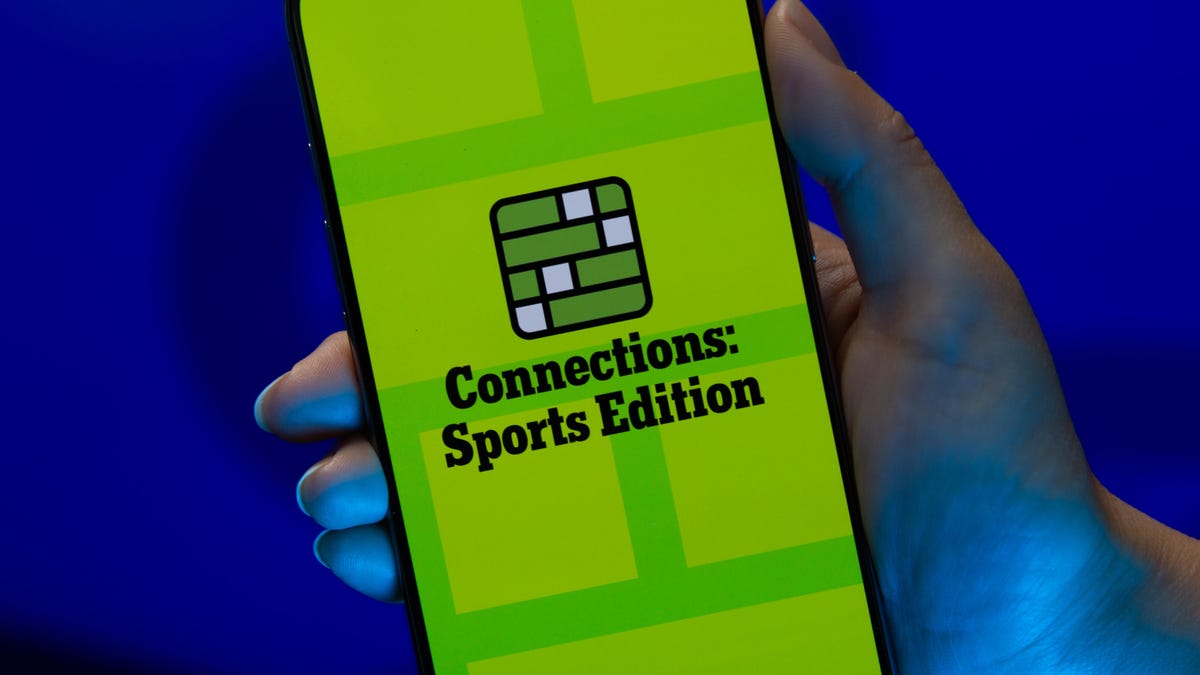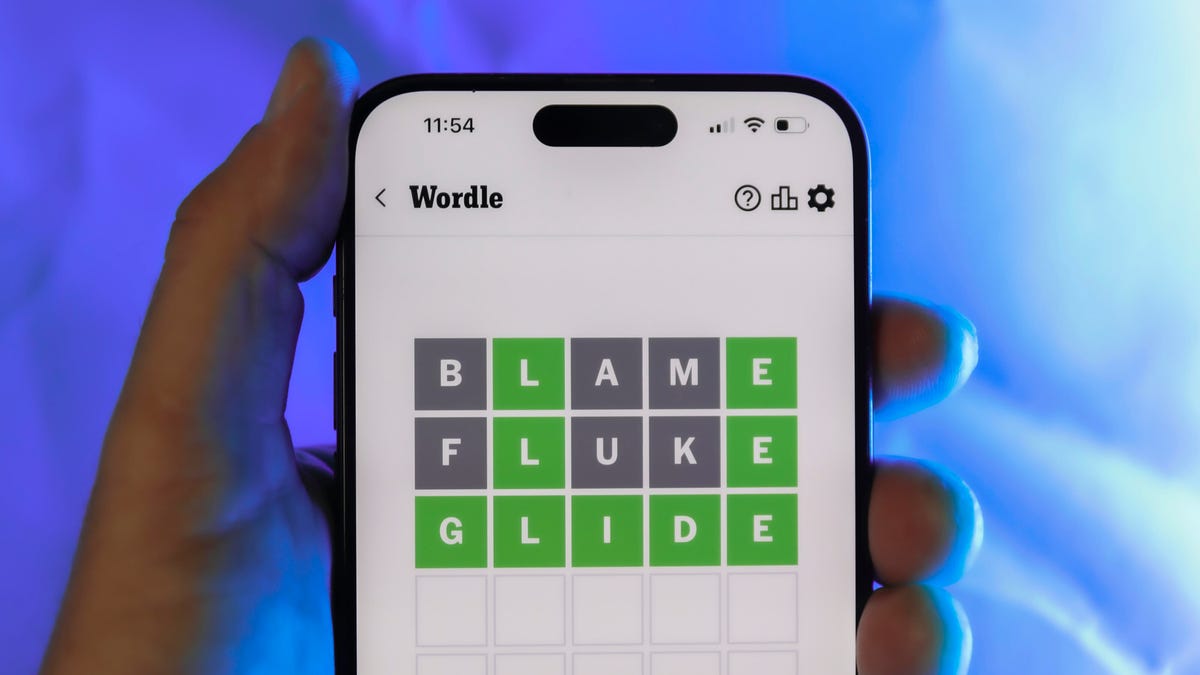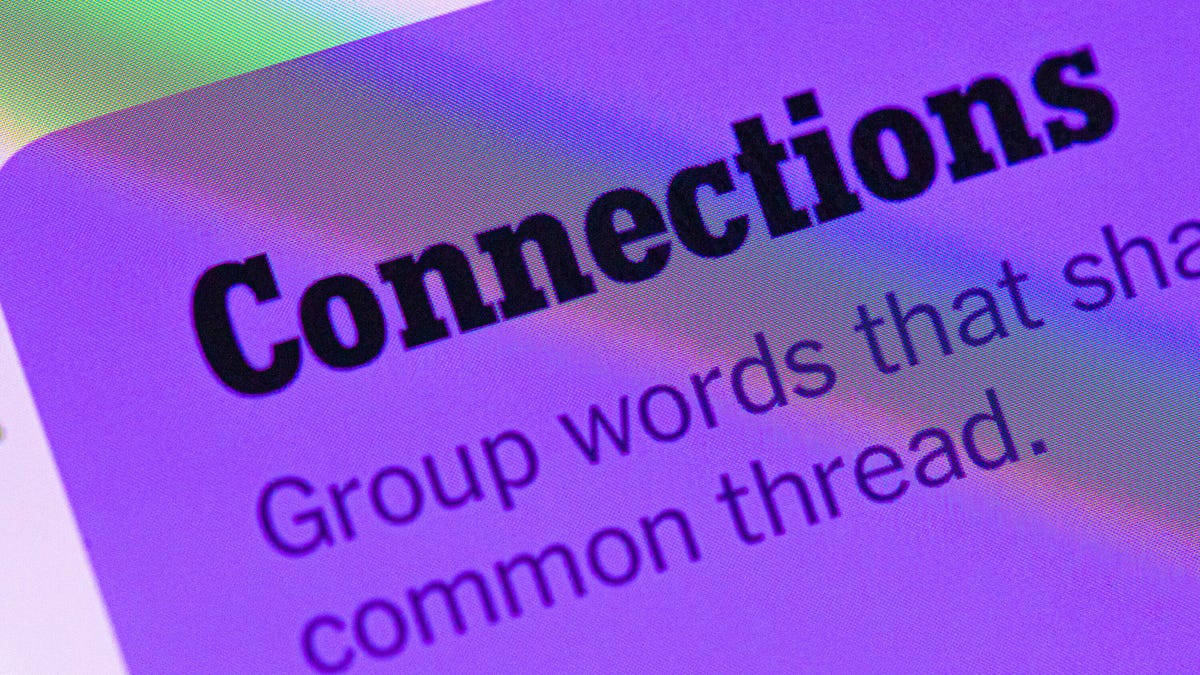Technologies
7 Ways Microsoft Uses AI to Make You Actually Care About Bing
It isn’t just ChatGPT on the Bing website. Microsoft blends OpenAI’s language technology with its own Bing search engine.

Microsoft Bing faces a big problem: Google utterly eclipses search engine. But Bing has a chance to grab more attention for itself with the OpenAI‘s language technology, the artificial intelligence foundation that’s made the ChatGPT service a huge hit.
For the brainier Bing to work, though, Microsoft has to get the details right. ChatGPT can be useful, but it can be flaky, too, and nobody wants a search engine they can’t trust.
Microsoft has put a lot of thought and its own programming resources into the challenge. It’s wrestled with issues like how AI-powered Bing shows ads, reveals its data sources, and grounds the AI technology in reality so you get trustworthy results, not the digital hallucinations that can be hard to spot in machine-generated information.
I spoke to Jordi Ribas, leader of Bing search and AI, to dig more deeply into the overhauled Bing search engine. He’s a big enough fan that he used the technology to help him write his boss a memo about it. «It probably saved me two to three hours,» he said, and it improved the Spanish executive’s English, too.
When the technology expands beyond today’s very small test group, it’ll let millions of us dig for much more complicated information, like whether an Ikea loveseat will fit into your car. And we’ll all be able to see whether it truly gives Google a run for its money. But for now, are seven aspects of Bing AI that I learned.
Bing AI isn’t just a repackaged version of ChatGPT
Microsoft blends its Bing search engine with the large language model technology from OpenAI, the AI lab that built the ChatGPT tool that’s fired up excitement about AI and that Microsoft invested in. You can get ChatGPT-like results using Bing’s «chat» option — for example, «Write a short essay on the importance of Taoism.» But for other queries, Bing and OpenAI technology are blended through an orchestration system Microsoft calls Prometheus.
For instance, you can Bing, «I like the band Led Zeppelin. What other musicians should I listen to?» OpenAI first paraphrases that prompt to «bands similar to Led Zeppelin,» then repackages Bing search results in a bulleted list. Each suggestion, like Fleetwood Mac, Pink Floyd and the Rolling Stones, comes with a two-sentence description.
Bing AI cites its sources — sometimes
When you give ChatGPT a prompt, it’ll respond with text it generates, but it won’t tell you where it got that information. The AI system is trained on vast amounts of the information on the internet, but it’s hard to draw a direct line between that training data and ChatGPT’s output.
On Bing, though, factual information is often annotated, because Bing knows the source from its indexing of the web. For example, in the Led Zeppelin prompt above, Bing includes a link at the top of its answer to a Musicaroo post, 13 Bands That Sound Like Led Zeppelin, and includes that link and others from MusicalMum and Producer Hive.
That sourcing transparency helps address a big criticism of AI, making it easier to evaluate whether the response is accurate or a mere AI hallucination. But it doesn’t always appear. In the essay on Taoism above, for example, there aren’t any sources, footnotes or links at all.
Some source links are ads that make Microsoft money
The Bing AI’s elaborate answers provide a new way for Microsoft to generate money from ads. In traditional Bing searches, the «organic» search results that Bing judges to be most relevant are separate from items placed by advertisers. But with Bing AI searches, the two types of information can be blended.
For example, in its response to the query «plan me a one-week trip to Iceland without a rental car,» AI-powered Bing suggests several destinations. In one of them, several words are underlined: «You can visit places like Vík, Skógafoss, Seljalandsfoss, and Jökulsárlón glacier lagoon by joining a multi-day tour or taking a bus.» Hovering over that link shows three sources for that information and an ad from a tour company. The advertisement is the top item of the three and is labeled «ad.»
«When you look at those citations, sometimes they are ads,» Ribas said. «When it’s more of a purchasing intent query, you hover over it and you’ll see the list of the references and sometimes it’s an ad. Then sometimes in the conversation itself, you’re going to see product ads, like if you do a hotel query.»
Ad revenue is a big deal, since it takes weeks of work on an enormous cluster of computers for OpenAI to build a single update to its language model, and OpenAI CEO Sam Altman estimates it costs a few cents to process each ChatGPT prompt. Bing, even though it’s a distant second to Google in the search engine market, still handles millions of queries a day.
Google plans to open access to its Bard AI chatbot soon, but it won’t be including ads to begin with.
OpenAI-boosted results are more relevant than plain old Bing
The fundamental measure of a search engine’s usefulness is whether its results are relevant, and the OpenAI technology brings a huge boost in the measurement that Microsoft uses to score its search engine results’ relevance.
«My team, working super, super hard in a given year, might move that metric by one point,» Ribas said, but OpenAI’s technology boosted it three points in one fell swoop. «It’s just never happened before in the history of Bing,» Ribas said.
That relevance boost is just for ordinary search results, Ribas added. OpenAI’s technology can further improve Bing with its chat interface that offers more elaborate answers and a follow-up exchange.
OpenAI makes Bing better with languages besides English
One particular area where Bing has been weak is searches that aren’t in English, and Ribas said OpenAI helps there. A lot of Bing’s three-point gain in relevance scoring «came from international markets,» Ribas said.
OpenAI’s large language model, or LLM, is trained with text from 100 languages. «Catalan is my first language. I can have a dialogue in Catalan. It works really, really well,» Ribas said
Bing brings OpenAI’s results up to date
Large language models like OpenAI’s GPT-3.5, the foundation for ChatGPT, are slow to build and improve, which means they don’t move at the speed of the web or of conventional search engines. GPT-3.5, for example, was trained in 2021, so it doesn’t have any idea about Russia’s invasion of Ukraine, the effects of recent inflation on consumers, or Xi Jinping securing his third term as general secretary of the Chinese Communist Party.
Bing often does know this more recent information, though. «When you bring in the Bing results, then you will get fresh results on that complete answer,» Ribas said.
Bing ‘grounds’ OpenAI’s flights of fancy
Microsoft uses its Bing data to try to avoid situations where OpenAI’s more creative technology could lead people astray. The more factual a query and answer are, the more Bing’s technology is used in the answer, Ribas said. This «grounding» significantly reduces AI’s problems with making stuff up: «It will reduce hallucination, which is … an ongoing battle,» Ribas said.
But Microsoft doesn’t want its grounding system to squash all the magic out of the AI. There’s a reason ChatGPT has been so captivating. The Prometheus system decides on the priorities for each query.
«We had to find the sweet spot between over-grounding the model and keeping it interesting,» Ribas said. «We have a measurement of the interestingness of the results, and we have a measurement for the groundedness of the results. The more the query is looking for something very factual, the more we weight the grounded. The more the query is supposed to be creative, the less we weight the grounded. I kept telling my team, I want my cake and eat it too.»
Technologies
Today’s NYT Connections: Sports Edition Hints and Answers for Dec. 31, #464
Here are hints and the answers for the NYT Connections: Sports Edition puzzle for Dec. 31, No. 464.

Looking for the most recent regular Connections answers? Click here for today’s Connections hints, as well as our daily answers and hints for The New York Times Mini Crossword, Wordle and Strands puzzles.
It’s New Year’s Eve, and two of today’s Connections: Sports Edition categories look back on the past year in sports. If you’re struggling with today’s puzzle but still want to solve it, read on for hints and the answers.
Connections: Sports Edition is published by The Athletic, the subscription-based sports journalism site owned by The Times. It doesn’t appear in the NYT Games app, but it does in The Athletic’s own app. Or you can play it for free online.
Read more: NYT Connections: Sports Edition Puzzle Comes Out of Beta
Hints for today’s Connections: Sports Edition groups
Here are four hints for the groupings in today’s Connections: Sports Edition puzzle, ranked from the easiest yellow group to the tough (and sometimes bizarre) purple group.
Yellow group hint: Lights, camera, sports!
Green group hint: Best in their sport.
Blue group hint: College sports sites.
Purple group hint: Team names are hidden.
Answers for today’s Connections: Sports Edition groups
Yellow group: Sports films of 2025.
Green group: MVPs of 2025.
Blue group: SEC football stadiums.
Purple group: Starts with an MLB team in singular form.
Read more: Wordle Cheat Sheet: Here Are the Most Popular Letters Used in English Words
What are today’s Connections: Sports Edition answers?
The yellow words in today’s Connections
The theme is sports films of 2025. The four answers are F1, Happy Gilmore, Marty Supreme and The Smashing Machine.
The green words in today’s Connections
The theme is MVPs of 2025. The four answers are A’ja Wilson, Connor Hellebuyck, Shai Gilgeous-Alexander and Shohei Ohtani.
The blue words in today’s Connections
The theme is SEC football stadiums. The four answers are Bryant-Denny, Jordan-Hare, Kyle and Sanford.
The purple words in today’s Connections
The theme is starts with an MLB team in singular form. The four answers are Angel Reese, Ray Allen, Red Auerbach and Tiger Woods.
Don’t miss any of our unbiased tech content and lab-based reviews. Add CNET as a preferred Google source.
Technologies
Today’s Wordle Hints, Answer and Help for Dec. 31, #1656
Here are hints and the answer for today’s Wordle for Dec. 31, No. 1,656.

Looking for the most recent Wordle answer? Click here for today’s Wordle hints, as well as our daily answers and hints for The New York Times Mini Crossword, Connections, Connections: Sports Edition and Strands puzzles.
End the year with a Wordle win. Today’s Wordle puzzle isn’t terribly tough. If you need a new starter word, check out our list of which letters show up the most in English words. If you need hints and the answer, read on.
Read more: New Study Reveals Wordle’s Top 10 Toughest Words of 2025
Today’s Wordle hints
Before we show you today’s Wordle answer, we’ll give you some hints. If you don’t want a spoiler, look away now.
Wordle hint No. 1: Repeats
Today’s Wordle answer has no repeated letters.
Wordle hint No. 2: Vowels
Today’s Wordle answer has two vowels.
Wordle hint No. 3: First letter
Today’s Wordle answer begins with S.
Wordle hint No. 4: Last letter
Today’s Wordle answer ends with N.
Wordle hint No. 5: Meaning
Today’s Wordle answer can refer to a device that makes a loud, long-lasting sound as some kind of signal or warning.
TODAY’S WORDLE ANSWER
Today’s Wordle answer is SIREN.
Yesterday’s Wordle answer
Yesterday’s Wordle answer, Dec. 30, No. 1,655 was DECOR.
Recent Wordle answers
Dec. 26, No. 1651: SPEED
Dec. 27, No. 1652: BATCH
Dec. 28, No 1653: ABBOT
Dec. 29, No. 1654: FRUIT
Don’t miss any of our unbiased tech content and lab-based reviews. Add CNET as a preferred Google source.
Technologies
Today’s NYT Connections Hints, Answers and Help for Dec. 31, #934
Here are some hints and the answers for the NYT Connections puzzle for Dec. 31, No. 934.

Looking for the most recent Connections answers? Click here for today’s Connections hints, as well as our daily answers and hints for The New York Times Mini Crossword, Wordle, Connections: Sports Edition and Strands puzzles.
Today’s NYT Connections puzzle has a tough purple category once again. But the yellow group is very timely, and pretty easy. Read on for clues and today’s Connections answers.
The Times has a Connections Bot, like the one for Wordle. Go there after you play to receive a numeric score and to have the program analyze your answers. Players who are registered with the Times Games section can now nerd out by following their progress, including the number of puzzles completed, win rate, number of times they nabbed a perfect score and their win streak.
Read more: Hints, Tips and Strategies to Help You Win at NYT Connections Every Time
Hints for today’s Connections groups
Here are four hints for the groupings in today’s Connections puzzle, ranked from the easiest yellow group to the tough (and sometimes bizarre) purple group.
Yellow group hint: Here comes 2026!
Green group hint: Where is it?
Blue group hint: Pennsylvania city.
Purple group hint: Waves.
Answers for today’s Connections groups
Yellow group: Happy New Year!
Green group: Places where things disappear.
Blue group: Associated with Philadelphia.
Purple group: Starting with bodies of water.
Read more: Wordle Cheat Sheet: Here Are the Most Popular Letters Used in English Words
What are today’s Connections answers?
The yellow words in today’s Connections
The theme is Happy New Year! The four answers are ball drop, champagne flute, fireworks and noisemaker.
The green words in today’s Connections
The theme is places where things disappear. The four answers are Bermuda Triangle, black hole, couch cushions and dryer.
The blue words in today’s Connections
The theme is associated with Philadelphia. The four answers are brotherly love, cheesesteak, Liberty Bell and Rocky.
The purple words in today’s Connections
The theme is starting with bodies of water. The four answers are bay leaf, channel surf, sea bass and sound barrier.
Don’t miss any of our unbiased tech content and lab-based reviews. Add CNET as a preferred Google source.
-

 Technologies3 года ago
Technologies3 года agoTech Companies Need to Be Held Accountable for Security, Experts Say
-

 Technologies3 года ago
Technologies3 года agoBest Handheld Game Console in 2023
-

 Technologies3 года ago
Technologies3 года agoTighten Up Your VR Game With the Best Head Straps for Quest 2
-

 Technologies4 года ago
Technologies4 года agoBlack Friday 2021: The best deals on TVs, headphones, kitchenware, and more
-

 Technologies4 года ago
Technologies4 года agoVerum, Wickr and Threema: next generation secured messengers
-

 Technologies4 года ago
Technologies4 года agoGoogle to require vaccinations as Silicon Valley rethinks return-to-office policies
-

 Technologies4 года ago
Technologies4 года agoOlivia Harlan Dekker for Verum Messenger
-

 Technologies4 года ago
Technologies4 года agoiPhone 13 event: How to watch Apple’s big announcement tomorrow
